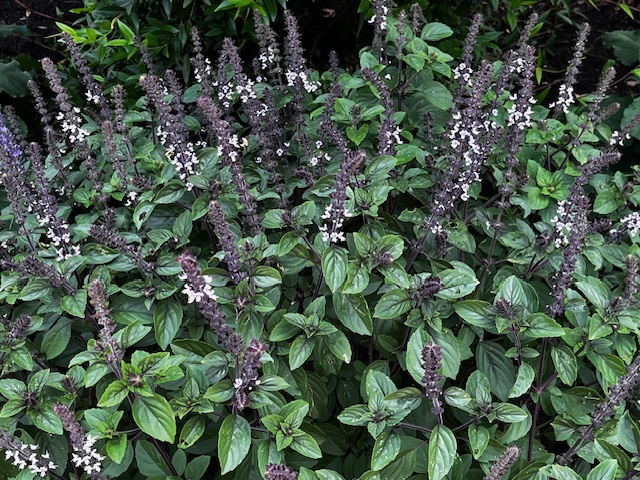Garden Chores in July
go.ncsu.edu/readext?1078980
en Español / em Português
El inglés es el idioma de control de esta página. En la medida en que haya algún conflicto entre la traducción al inglés y la traducción, el inglés prevalece.
Al hacer clic en el enlace de traducción se activa un servicio de traducción gratuito para convertir la página al español. Al igual que con cualquier traducción por Internet, la conversión no es sensible al contexto y puede que no traduzca el texto en su significado original. NC State Extension no garantiza la exactitud del texto traducido. Por favor, tenga en cuenta que algunas aplicaciones y/o servicios pueden no funcionar como se espera cuando se traducen.
Português
Inglês é o idioma de controle desta página. Na medida que haja algum conflito entre o texto original em Inglês e a tradução, o Inglês prevalece.
Ao clicar no link de tradução, um serviço gratuito de tradução será ativado para converter a página para o Português. Como em qualquer tradução pela internet, a conversão não é sensivel ao contexto e pode não ocorrer a tradução para o significado orginal. O serviço de Extensão da Carolina do Norte (NC State Extension) não garante a exatidão do texto traduzido. Por favor, observe que algumas funções ou serviços podem não funcionar como esperado após a tradução.
English
English is the controlling language of this page. To the extent there is any conflict between the English text and the translation, English controls.
Clicking on the translation link activates a free translation service to convert the page to Spanish. As with any Internet translation, the conversion is not context-sensitive and may not translate the text to its original meaning. NC State Extension does not guarantee the accuracy of the translated text. Please note that some applications and/or services may not function as expected when translated.
Collapse ▲VEGETABLES
- Consistent moisture is important for preventing blossom-end-rot on tomatoes (and sometimes squash or peppers). Mulch helps as well as attention to regular irrigation.
- Keep tall vegetables supported with stakes or cages to keep foliage and fruit off the ground.
- Keep a watch out for early or late blight on tomatoes.
- Cut back basil, mint and oregano to keep them compact, encourage new
foliage growth and prevent these herbs from blooming and going to seed. - Harvest vegetables when young, tender and tasty.
- Dig potatoes when the foliage begins to die.
- There is still time to plant late crops of squash, bush beans or cucumbers.
- Plan the fall garden. Take time now to soil sample.
- Start seeds for transplants such as broccoli, cabbage and collards.
- WHEN IS IT TIME TO HARVEST VEGETABLES?
Before they become overly mature and during the cool part of the morning
COMMON TOMATO DISEASES
Learn how to better identify and manage fungal and bacterial
plant pathogens that commonly attack tomatoes.
Correct diagnosis is key to effective disease management!
TOMATO DISEASE FACTSHEETS
Vegetables – Tomato Diseases
GENERAL INFORMATION / DISEASE FACTSHEETS FOR VEGETABLES
Plant Pathology – Vegetables
ORNAMENTALS
- Don’t fertilize shrubs and trees.
- Prune only as needed. Mid July is the cut off for the summer season.
- Cicada damage on large trees is not a concern. The brown tips on branches will eventually fall to the ground. Smaller trees or specimen plants can be severely damaged by cicada and may require slight pruning to remove the damaged material. If the main terminal was damaged, replace it by splinting an upper lateral to a vertical position. Prune laterals below the new leader. remove the splints after one growing season. Read More on Cicada Damage
- Deadhead spent flowers to encourage continued blooming on annuals and re-blooming on some perennials.
- Container gardens require attention. Fertilize every few weeks with liquid
fertilizer and cut back plants as needed. - Don’t forget to water newly planted trees, shrubs and perennials – weekly if needed.
- Observe flowers in the garden and notice which ones attract the greatest number of pollinators. The Thai Basil in the photo below is a pollinator magnet!
- Mark your calendar for The Great Southeast Pollinator Census August 22 & 23. This is a great opportunity to learn how to identify the many pollinators visiting your plants and to participate in a Citizen Science project. Learn more on the website above.
FRUIT
- Prune fruiting canes from blackberries and raspberries after harvest. Read More about Pruning Blackberries
- Prune the vigorous water sprouts on tree fruits to reduce excess growth.
- Spotted Wing Drysophila can be problematic on ripening blueberries. To
sample – drop fruit in salt water and watch for larvae to emerge. - Remove overripe fruit from day neutral strawberries to continue production.
- Although Muscadine grapes are marginally hardy for our area your site may be protected enough to get fruit. Did you know that the dark skin varieties are more disease resistant than the bronze? More on Muscadine Grapes
LAWNS
- Do not mow during hot and dry weather. Mowing at this time can stress grass and cause it to weaken.
- To reduce the spread of brown patch fungus disease in the lawn avoid
mowing, and walking on the lawn when it is wet. - Mow the fescue and bluegrass lawns 3 inches high.





